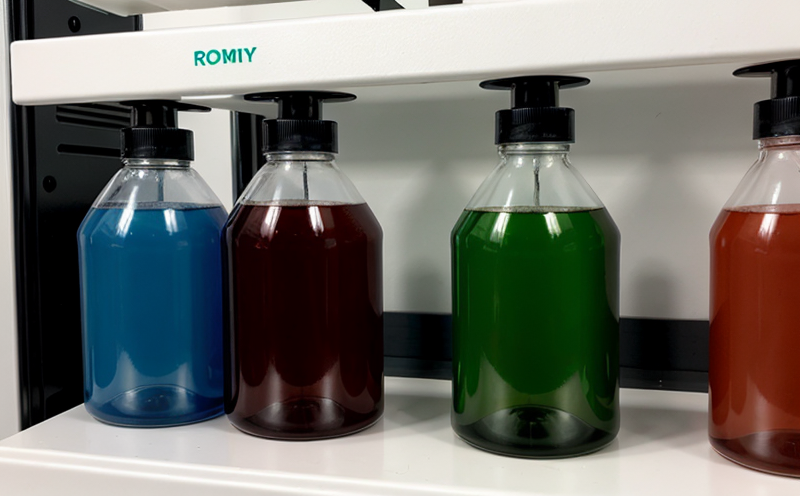ISO 16396 Reactivity Testing of Polyamide Materials
The ISO 16396 standard is widely recognized for its role in assessing the reactivity and potential risk associated with polyamide materials. This test method evaluates the stability and compatibility of polyamides under specific conditions to ensure they do not undergo unwanted polymerization or react unpredictably when exposed to certain chemicals.
Polyamides are versatile polymers used in a myriad of applications, including automotive parts, medical devices, and electronics due to their strength, flexibility, and chemical resistance. However, the reactivity of polyamide materials can vary depending on formulation, processing conditions, and environmental factors such as temperature and humidity. This variability necessitates thorough testing to ensure safety and reliability.
The ISO 16396 test involves exposing the polyamide sample to a series of chemicals under controlled conditions to observe any changes in the material's properties over time. The primary objective is to determine whether the polyamide undergoes degradation, swelling, or other adverse reactions that could impact its performance and longevity.
One critical aspect of this testing method is the selection of appropriate chemical reagents. These reagents are chosen based on their potential for interacting with the polyamide under typical use conditions. The test setup includes precise measurement techniques to quantify any changes in weight, color, or other physical properties of the sample post-exposure.
The results from ISO 16396 testing provide essential data for quality managers and compliance officers to make informed decisions about material selection and process optimization. R&D engineers can leverage these insights to develop more robust formulations and improve product design. Procurement teams benefit from this information by ensuring that they source materials that meet stringent reactivity standards.
For quality assurance purposes, compliance with ISO 16396 is crucial for manufacturers looking to meet regulatory requirements and industry best practices. This test ensures that polyamide products are safe for use in various environments without posing risks of unintended reactions. By adhering to this standard, companies can enhance their reputation as leaders in sustainable manufacturing and innovation.
Additionally, ISO 16396 testing helps identify potential compatibility issues between different components within a product assembly. This is particularly important when polyamides are used alongside other materials such as metals or plastics. Ensuring that these interactions do not lead to degradation or failure enhances the overall durability and reliability of products.
In summary, ISO 16396 reactivity testing plays a vital role in safeguarding both product quality and end-user safety. It provides critical information necessary for optimizing manufacturing processes while also supporting regulatory compliance efforts.
Applied Standards
The ISO 16396 standard is specifically designed to address the reactivity of polyamide materials and their potential interactions with various chemicals. It aligns closely with other international standards that focus on polymer stability, such as ASTM D5807-13 (Standard Test Method for Determining the Stability of Polymeric Materials to Chemical Agents) and EN 946:2012 (Plastics - Determination of Resistance to Swelling by Organic Liquids).
ISO 16396 emphasizes the importance of controlled environmental conditions during testing, ensuring accurate results that reflect real-world scenarios. The standard specifies detailed procedures for sample preparation, exposure time, and evaluation criteria, making it a comprehensive tool for assessing polyamide reactivity.
Compliance with ISO 16396 is not only beneficial for meeting regulatory requirements but also enhances the reputation of companies engaged in polymer manufacturing. By adhering to this standard, organizations demonstrate their commitment to producing high-quality materials that are both safe and reliable.
Environmental and Sustainability Contributions
- Eco-friendly Material Development: ISO 16396 testing ensures that polyamide formulations are stable over time, reducing the risk of premature degradation. This leads to longer-lasting products with minimal environmental impact.
- Resource Efficiency: By identifying materials prone to reactivity early in the development stage, manufacturers can optimize their processes to minimize waste and resource consumption.
- Sustainable Product Design: Testing results from ISO 16396 help engineers design products that are more durable and adaptable to changing environmental conditions. This promotes a circular economy by encouraging product longevity and recyclability.
Incorporating these sustainable practices not only benefits the environment but also contributes positively to corporate social responsibility initiatives. Companies adopting ISO 16396 in their quality control protocols are positioned to lead the industry towards more eco-conscious manufacturing processes.
Competitive Advantage and Market Impact
The implementation of ISO 16396 reactivity testing offers several competitive advantages for manufacturers. Firstly, it ensures that products meet the highest quality standards, thereby enhancing customer trust and satisfaction. Secondly, compliance with this international standard can open up new markets where regulatory requirements are stringent.
Manufacturers who invest in ISO 16396 testing demonstrate their commitment to excellence, which translates into a better brand image and increased market share. This standard also facilitates smoother supply chain management by ensuring that all materials used meet rigorous specifications.
In the highly competitive polymer industry, maintaining consistent product quality is essential for long-term success. ISO 16396 testing plays a crucial role in achieving this consistency, making it an indispensable tool for any company aiming to stay ahead of the curve.





